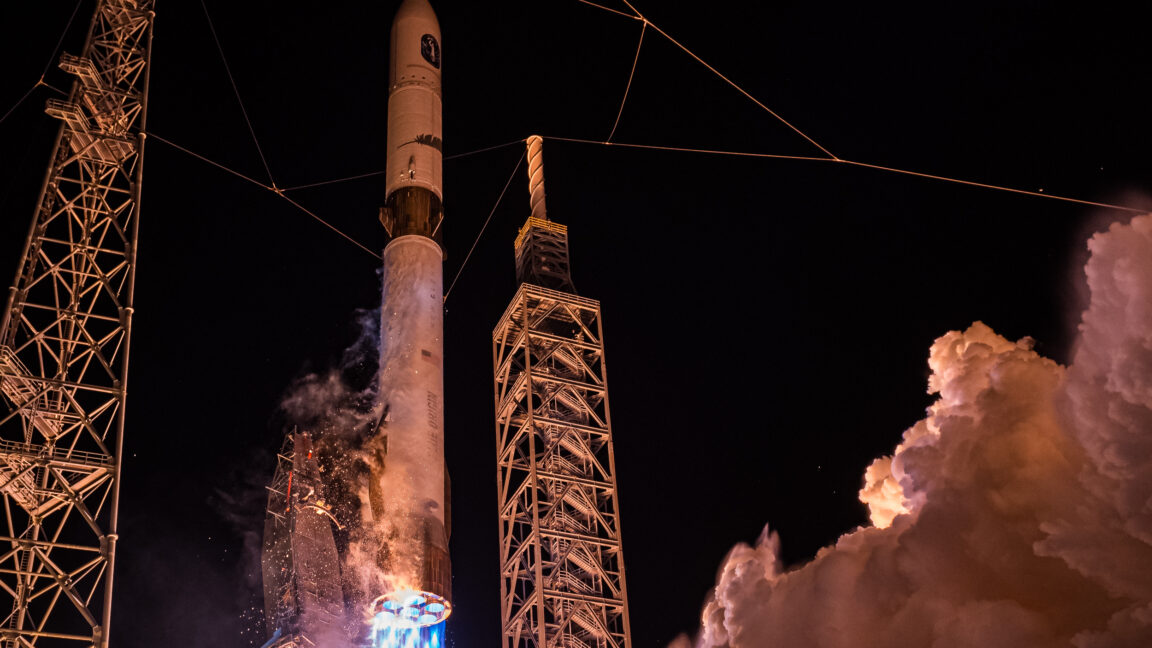Science
Blue Origin Prepares for Crucial New Glenn Launch to Moon

The upcoming launch of Blue Origin’s New Glenn rocket holds significant implications for both NASA’s Mars exploration and the company’s lunar ambitions. Scheduled for no earlier than November from Cape Canaveral Space Force Station in Florida, this mission aims to deploy two NASA-funded satellites designed to study the upper atmosphere of Mars. The outcome of this launch will not only impact the scientific community but also play a crucial role in Blue Origin’s quest for certification to launch national security satellites.
Successful recovery of the New Glenn rocket’s first stage booster is paramount, as Blue Origin plans to use the same booster for its first robotic Moon lander, expected to launch early next year. Following the first New Glenn flight in January, the booster fell into the Atlantic Ocean after three engines failed to reignite. Engineers have since identified seven improvements aimed at ensuring a successful landing this time around.
In a presentation at the International Astronautical Congress in Sydney, Pat Remias, Blue Origin’s vice president of space systems development, expressed confidence in the success of the second New Glenn flight, stating, “We fully intend to recover the New Glenn first stage on this next launch.” The booster stage for this flight has been aptly named “Never Tell Me The Odds,” reflecting the company’s ambitious goals.
Blue Origin’s strategy relies heavily on reusing its rocket boosters, which are designed to be refurbished and launched again within 90 days. This approach is a departure from traditional methods, as it aims to streamline operations and reduce costs. However, it also introduces risks, particularly given the company’s current production pace, which has seen the manufacturing of second stages outpace that of booster stages.
The outcome of the upcoming launch is critical not only for the immediate goals of Blue Origin but also for its long-term vision. The third New Glenn flight, tentatively scheduled for January 2024, aims to deliver Blue Origin’s first lunar lander, Blue Moon Mark 1. This uncrewed vehicle is designed to carry up to 3 metric tons of cargo to the Moon’s surface, marking a significant milestone in the company’s lunar exploration efforts.
A successful booster recovery would also pave the way for future missions, including one planned for late 2027, which involves deploying NASA’s VIPER rover to search for water ice on the Moon. Blue Origin has plans for a series of landers, with the Blue Moon Mark 1 being the first in a family of spacecraft designed for lunar exploration.
The competitive landscape is intensifying, with China also progressing towards its lunar ambitions, aiming for a crewed Moon landing by 2030. This situation has raised the stakes for NASA and its partners, including Blue Origin, as they seek to establish a sustainable presence on the Moon.
In conclusion, the success of Blue Origin’s upcoming New Glenn launch is crucial not only for the future of the company’s lunar program but also for maintaining the United States’ leadership in space exploration. The results of this mission will resonate beyond the immediate objectives, potentially influencing the trajectory of international lunar exploration efforts for years to come.
-

 Politics4 weeks ago
Politics4 weeks agoSecwepemc First Nation Seeks Aboriginal Title Over Kamloops Area
-

 World5 months ago
World5 months agoScientists Unearth Ancient Antarctic Ice to Unlock Climate Secrets
-

 Entertainment5 months ago
Entertainment5 months agoTrump and McCormick to Announce $70 Billion Energy Investments
-

 Science5 months ago
Science5 months agoFour Astronauts Return to Earth After International Space Station Mission
-

 Lifestyle5 months ago
Lifestyle5 months agoTransLink Launches Food Truck Program to Boost Revenue in Vancouver
-

 Technology3 months ago
Technology3 months agoApple Notes Enhances Functionality with Markdown Support in macOS 26
-

 Lifestyle3 months ago
Lifestyle3 months agoManitoba’s Burger Champion Shines Again Amid Dining Innovations
-

 Top Stories2 months ago
Top Stories2 months agoUrgent Update: Fatal Crash on Highway 99 Claims Life of Pitt Meadows Man
-

 Politics4 months ago
Politics4 months agoUkrainian Tennis Star Elina Svitolina Faces Death Threats Online
-

 Sports5 months ago
Sports5 months agoSearch Underway for Missing Hunter Amid Hokkaido Bear Emergency
-

 Politics5 months ago
Politics5 months agoCarney Engages First Nations Leaders at Development Law Summit
-

 Technology5 months ago
Technology5 months agoFrosthaven Launches Early Access on July 31, 2025





















